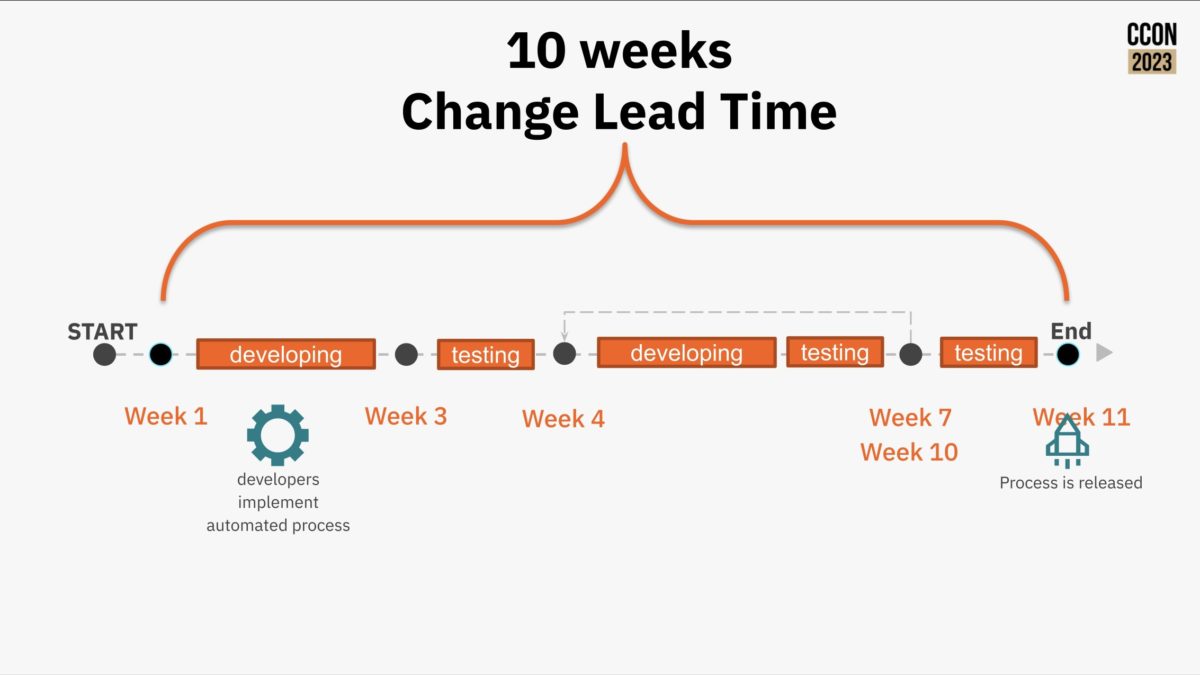Zurich has been working on their end-to-end processes for a long time, and found that the lead time for changes became a problem as they attempted to move to continuous improvement through continuously changing processes. Laurenz Harnischmacher and Stefan Post of Zurich presented their approach to improving this. They measured Change Lead Time, which is the time that the developer starts working on a change until it is released to production, and found that it was generally about 10 weeks. This was a problem not just for agile processes in general, but they also had a mismatch between what the developers were creating versus what the users actually needed, which meant that there were potentially multiple of those 10-week cycles to solve a single problem. In other words, like many other organizations, there was not an appropriate and complete method of communicating needs from business to the developer.
They adopted Behavior Driven Development, which provides a methodology for the business to define the desired system behavior using structured test scenarios, aided by the use of Cucumber. These scenarios are defined with given…when…then…and language to specify the context, constraints and expected behavior. This takes a bit longer up front, since the business unit has to write complete test cases, then the developers/testers create the automated testing scenarios and feedback to the business if they find inconsistencies or omissions, then development occurs, then the automated testing can be applied to the finished code. This is much more likely to result in code that works right for the business the first time rather than requiring multiple cycles of the full development cycle.

Although they’ve been able to have a huge improvement in lead time, I’m left with the thought that somewhere along the Agile journey, we lost the ability to properly create business requirements for software. Agile in the absence of written requirements works okay if your development cycle is super-short, but 10 weeks is not really that Agile. I’m definitely not advocating a return to waterfall development, where requirements are completely documented and signed off before any development begins, but we need to bake in some of the successful bits of waterfall with a more (lower-case A) agile iterative approach. This is independent of Camunda or any other platform, and more a comment on how application development needs to work in order to avoid excessive lengthy rework cycles. Also, the concepts of BDD borrow a lot from earlier test-driven development methods; in software development, like much else in life, everything old is new again.
Interesting to note from the comments at the end that the automated test cases are only for automated/service steps, and that the business people do not create process models directly. 樂

